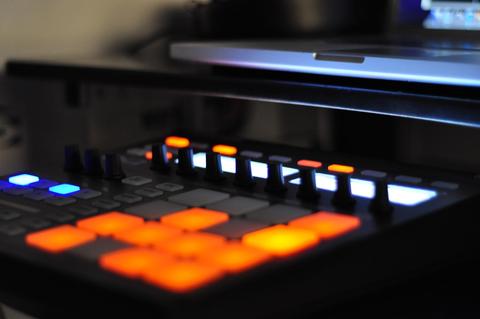

Have you ever wondered why some old records still sound great parties, causing everyone to lose themselves? Or why we still rely on sampling 30 year old records to make hit tunes - (Robin Thicke and Pharrell, I'm talking to you) - ?
With most of todays music being digitally made we have forgotten what a true groove is. We focus too much on perfect sounds, and quantizing a drum sequence requires no more than a hotkey. But the truth is that a perfect song is not perfect. Music requires imperfections to sound pleasing. An emotion is a human thing, and humans are far from perfect. Even the tightest drummer will still miss some hits by a few milliseconds. And when a drummer misses a hit we associate with him, because we can hear that a human being is playing the drums. Obviously, most producers do not have access to a professional drummer 24/7. But there are still a lot of tricks you can use in your DAW to give your beats that sought-after groove, and I will tell you about these secrets in this mini-tutorial on getting that groove!
The first trick I'd like to explain, is to stop quantizing everything like a maniac. When you're programming drums, try to turn the grid in your DAW off. Instead of watching where you place your hits, listen to them - preferably without a metronome. Try to place some hits slightly early, and some a little too late. What you are trying to do here is emulate a professional, soulful drummer. But at the same time you do not want to emulate a shitty drummer. You want your groove to be tight, but still human. This means you have to be very subtle with the timing, or else your drums will sound sloppy. Note that sometimes a track can sound great with sloppy drums, so give that a try too!
Another aspect of getting the perfect groove is the loudness of each hit. A good drummer will never hit the same drum with the exact same amount of power. You can emulate this effect by varying the velocity of each hit. Personally I like it when the first, third, fifth and seventh hit of a 1/8 hi-hat pattern are a bit louder than the hits in between. It emphasizes the kick and the snare of the beat. You could also try doing the exact opposite and accentuate the second, fourth, sixth and eighth hit in a 1/8 hi-hat pattern. This will emphasize the "downbeat", creating a more "bouncy" rather than "aggressive" feeling.
A snare-drum's pitch will change depending on where the drummer hits the skin. Although this might not be considered crucial for getting a drum-groove, it can help by making the drum sound more organic. To emulate this effect quickly, you could for an instance add a very slow and subtle vibrato to the snare - and I mean a REALLY slow vibrato. Duplicating the same one-shot sample many times and processing it differently can also create a more organic vibe. Remember that there are no rules for this, and abusing this tip can yield awesome effects.
Now is the time to reveal the BIG secret of getting a sick groove: finding a great groove to copy. Rest assured, I am not saying you should simply copy someone else's drums. What I am saying is that to get the ultimate "human groove" you could simply record a percussion sequence yourself, e.g. with a shaker. You can record your shaker a thousand times until you find that moment where all stars align. When you have your 4- or 8 bar shaker-loop, simply adjust your one-shot drums so that they align with the shaker. Now, who said you need to keep that shaker at all? Just delete it if you do not want it - the point here is to find a great groove which you can apply to other sounds. In Ableton Live, my DAW of choice, there is a neat feature called "extract groove", which means you could load in an old'n'groovy drum-break, extract it's groove and apply it to your midi-sequence. Voilà! There’s a solution for the lazy ones too!
I hope you enjoyed these pieces of advice and I hope they can help you make your beats more groovy! Although this tutorial was in regard of drums, remember that other elements in your beats can be equally important. Especially your bass-line. The advice in this article can be applied to any instrument. Remember that good music is all about how different instruments work together. So if you want your beats to sound musical and groovy, spend lots of time shifting your notes and hits a few milliseconds before and after. Although those changes do not sound so obvious, they can really affect people on a sub-conscious level, making them dance their balls off!
 info@modernproducers.com
info@modernproducers.com  Login
Login



